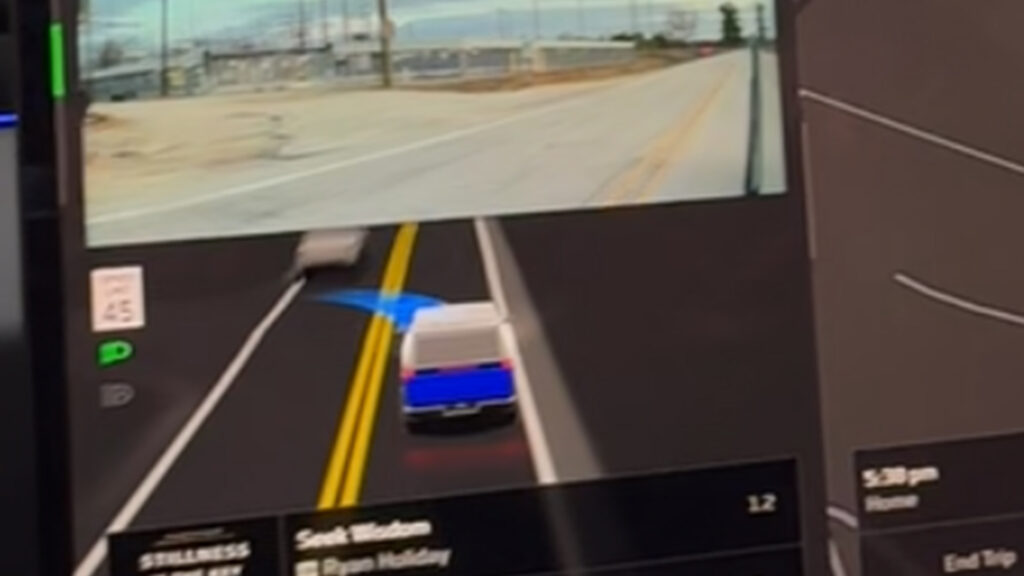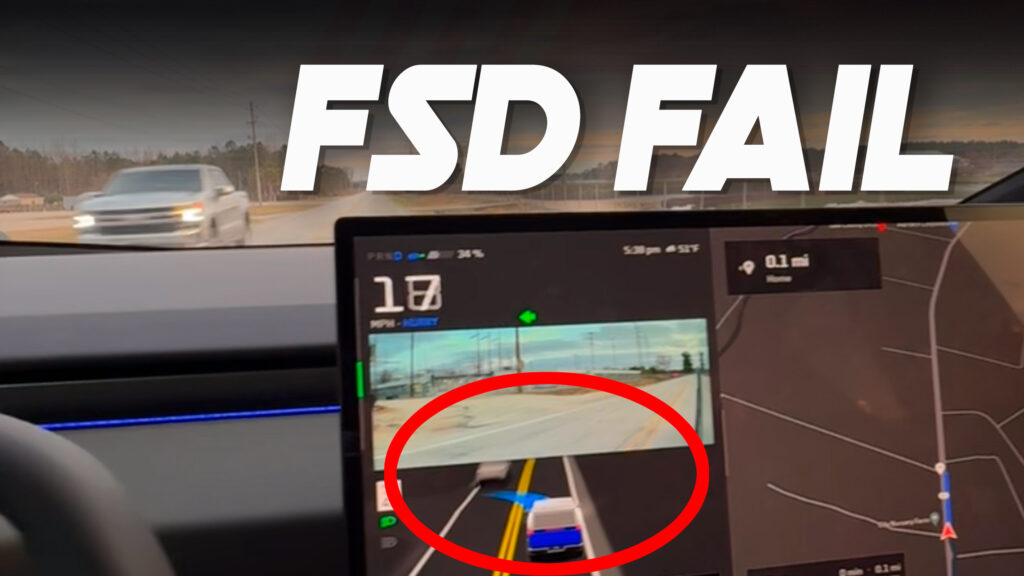- Tesla’s Full Self-Driving system failed to avoid an oncoming pickup truck during a drive.
- Quick driver intervention prevented what could have been a serious head-on collision.
- It’s uncertain whether faulty software or the camera-only system caused the near-miss.
Tesla plans to introduce a paid-for robotaxi service in Texas this June, featuring models fitted with its Full Self-Driving system. It will be an important step in Elon Musk’s long-promised goal of bringing unsupervised self-driving cars to the market. But while Tesla’s autonomous tech has steadily improved over the years, a newly surfaced video is yet another reminder that “Full Self-Driving” still isn’t quite what it claims to be.
This particular clip was posted by on the Cybertruck Owners Club forum. According to the owner, he was driving with his dad and decided to demonstrate how the system repeatedly misidentified his driveway as belonging to the plant nursery placed next door. Unfortunately, the test didn’t go as planned.
Read: Crashed Cybertruck Owner Claims They “Nearly Got Killed” Due To FSD Failure
Initially, FSD seems to be operating as expected and drives smoothly down the country road as it approaches his driveway. The Cybertruck then begins to slow down and turns on the left signal. At the same time, a silver Chevrolet pickup can be seen approaching the Tesla in the other lane and just as it’s about to pass, the Tesla quickly steers to the left, directly into the path of the Chevy.

Fortunately, the driver was able to react quickly enough to avoid what could have been a serious collision. A look at the screen of the Cybertruck shows it was in ‘Hurry’ mode at the time and that the driver-assistance system identified the oncoming pickup. However, for a split second, the Cybertruck’s computers plotted a path directly into the Chevy.
It’s hard to say whether this was triggered by the Full Self-Driving software, Tesla’s insistence to only use cameras instead of more sophisticated radars and lidar sensors, or perhaps a combination of both. Whatever the reason, this near-miss, as well as many others, show that FSD has a long way to go before it’s safe to use unsupervised.
As Tesla pushes ahead with its robotaxi plans, these glitches remain a glaring problem. If the system still struggles with something as basic as recognizing an active traffic lane, it’s fair to question how ready it really is for the road—let alone for carrying paying passengers without a driver.



